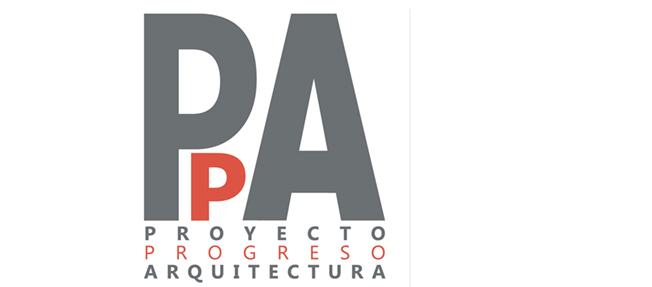ISSN (print): 2171-6897
ISSN (online): 2173-1616
Mar
2021
Nov
2021
The events experienced in the year 2020 show the need for a solid, but pressing, reflection on the changes caused by human beings in our living environment during the 20th century and their consequences, from which renewed realities will emerge. In the private sphere, the solutions from the point of view of safety have been quick to materialise, these solutions being the offspring of the individualism of the fallout shelters of the Cold War, i.e., technology and provisions, control filters with the outside – confinement, telecommuting, etc. – and a series of new habits in which physical and digital consumerism is reinforced to support the market of comfort. On the contrary, the crossing points of neighbours, public buildings, squares and parks, territorial infrastructures —in short, the common space, increases the weakening that it has suffered since 2001, diminishing with it the biggest progress obtained during the last century: collective social welfare. Carles Martí Arís pointed out the importance of the concept of transformation as the driving force of the project. It is the change that, above and beyond the abstract idea of type, incorporates the physical object into architecture and makes things transform or pass “from one form to another”. New situations emerge as a result, in which traces of the previous state from before the change takes place are left. In the emergence, the transformation must take place as soon as possible, with the greatest possible checks that the situation allows. In our discipline we have two crucial instruments, the drawing and the model, through which advanced projects can be checked before their final implementation. These tools, physical or digital, must be applied with skill, that is, from the expertise resulting from experience, for which it is necessary to study the background, renewed in each reflective event, to demonstrate its value in the present. In this 25th call of PpA, articles aimed at contributing to the common space in architecture, in its various scales and uses, from the gates of residents to the territory, will be welcomed. Proposals should preferably be based on the tools of the architectural project, whether they are new contributions or background checks. In all of them, the need for the scientific method must be taken into account, with objectives that are sensitive to the current situation, and understanding the concept of emergence not so much as an alarm signal but as the appearance of a new way of understanding the common space, inherited from the past. In this sense, a methodology based on the tools of the architectural project and the mastery of them will have to be incorporated. To paraphrase Martí again, the variations of the identities of architecture require the knowledge of them.
SpainThe emergence of the common space
The events experienced in the year 2020 show the need for a solid, but pressing, reflection on the changes caused by human beings in our living environment during the 20th century and their consequences, from which renewed realities will emerge. In the private sphere, the solutions from the point of view of safety have been quick to materialise, these solutions being the offspring of the individualism of the fallout shelters of the Cold War, i.e., technology and provisions, control filters with the outside – confinement, telecommuting, etc. – and a series of new habits in which physical and digital consumerism is reinforced to support the market of comfort. On the contrary, the crossing points of neighbours, public buildings, squares and parks, territorial infrastructures —in short, the common space, increases the weakening that it has suffered since 2001, diminishing with it the biggest progress obtained during the last century: collective social welfare. Carles Martí Arís pointed out the importance of the concept of transformation as the driving force of the project. It is the change that, above and beyond the abstract idea of type, incorporates the physical object into architecture and makes things transform or pass “from one form to another”. New situations emerge as a result, in which traces of the previous state from before the change takes place are left. In the emergence, the transformation must take place as soon as possible, with the greatest possible checks that the situation allows. In our discipline we have two crucial instruments, the drawing and the model, through which advanced projects can be checked before their final implementation. These tools, physical or digital, must be applied with skill, that is, from the expertise resulting from experience, for which it is necessary to study the background, renewed in each reflective event, to demonstrate its value in the present. In this 25th call of PpA, articles aimed at contributing to the common space in architecture, in its various scales and uses, from the gates of residents to the territory, will be welcomed. Proposals should preferably be based on the tools of the architectural project, whether they are new contributions or background checks. In all of them, the need for the scientific method must be taken into account, with objectives that are sensitive to the current situation, and understanding the concept of emergence not so much as an alarm signal but as the appearance of a new way of understanding the common space, inherited from the past. In this sense, a methodology based on the tools of the architectural project and the mastery of them will have to be incorporated. To paraphrase Martí again, the variations of the identities of architecture require the knowledge of them.
WoS – Arts & Humanities Citation Index (A&HCI), Scopus, AVERY Index to Architectural Periodicals, Fuente Académica Premier (EBSCO), Art Source (EBSCO), REDALYC España y Portugal, REBID, Red Iberoamericana de Innovación y Conocimiento Científico, DOAJ, PROQUEST (Arts & Humanities, full text) Latindex | Dialnet, MIAR, Dulcinea, REDIB + 2018, EBSCOS+1.
There is no fee of any kind charged for publishing.









